TTArtisan AF 56mm F1.8 X-mount Review
Dustin Abbott
April 18th, 2024
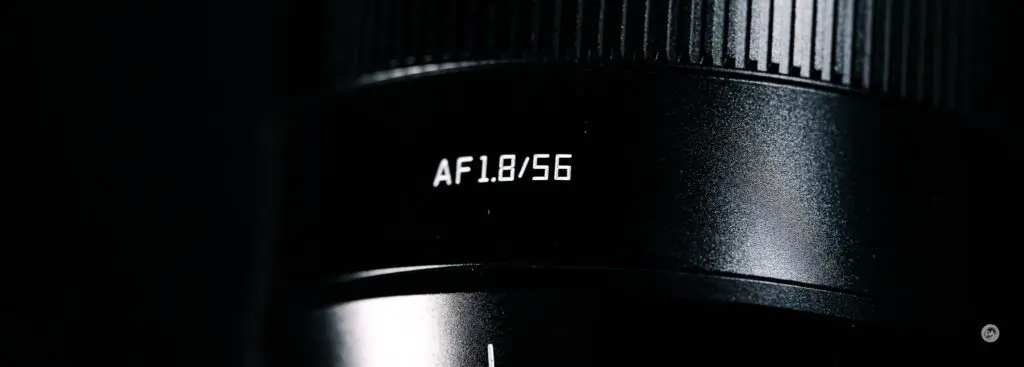
Several months ago I reviewed one of the first autofocus lenses from newer lensmaker TTArtisan. That lens (AF 35mm F1.8) impressed me in a number of ways, though there were still a few areas that reminded me that TTArtisan was new to the business of making autofocus lenses. I was very impressed when they reached out to me about their newest lens, and, in that email, made it clear that they had been paying attention to the criticisms of their last effort. They particularly focused their efforts in three areas: to reduce flaring, to reduce vignette, and to improve the minimum focus distance and maximum magnification. The TTArtisan AF 35mm F1.8 was an impressive lens despite its flaws, primarily because they kept the price at $150 USD or less. They are following it up with their new and improved lens, the TTArtisan AF 56mm F1.8, which is priced just slightly higher at $158 USD. The new lens will give a roughly 85mm angle of view on various APS-C cameras like Fuji X (tested here), Sony E, or Nikon Z. Has TTArtisan given us another bargain gem? Find out by watching my video review below…or just reading on.
Follow Me @ YouTube | Patreon | Instagram | Facebook | DA Merchandise | Flickr | 500px | X
Thanks to TTArtisan for sending me a review copy of this lens. As always, this is a completely independent review. All opinions and conclusions are my own. I’m doing this review on a 40MP Fujifilm X-H2 camera.
__________________________________________________________________________________________________
I’m doing this review on Fuji X-mount today, as that is what is TTArtisan had available to send me. As with the 35mm, this is jumping right into the fire, as there is no platform more optically demanding than the 40MP sensor on my Fujifilm X-H2. This is the equivalent of over 90MP on full frame, a resolution point that is currently 30+MP higher than what is even available on full frame. Can such an inexpensive lens keep up? The answer is, surprisingly, yes. The TTArtisan AF 56mm becomes the least expensive lens I’ve used that actually looks pretty good on this demanding sensor.

This is a nicely built little lens with a fairly decent (but not exceptional) autofocus performance. There are a few flaws here, but by and large I think this is actually quite a capable little lens, capable of producing detailed images even af F1.8:

Sound interesting? Let’s break things down in detail…
Build and Handling
56mm is a fairly popular focal length on APS-C platforms due to being very close to an 85mm angle of view once you apply the 1.5x crop factor of these various cameras. 56 x 1.5 = 84mm. Even on Fuji, the platform I’m testing, there are four different autofocusing 56mm lenses with various aperture values from F1.2 to F1.8.
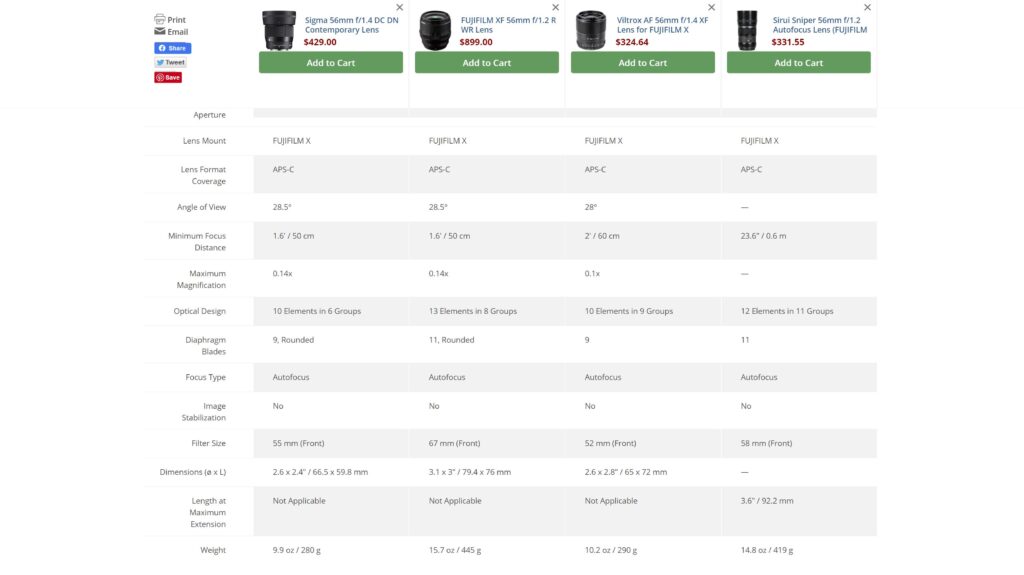
As you can see, there is also a variety of price points, from $325 on the low end to $900 on the high end. There’s no question that the TTArtisan AF 56mm will be the value option here as it is running about half the price of the cheapest option. It’s also worth noting that it is the smallest in terms of aperture, however.
But perhaps that will be an acceptable tradeoff to when you consider that the price is so much cheaper…and you are getting a compact, lightweight lens. The lens is 65mm in diameter (2.55″) and 62mm (2.44″) in length. It weighs in at 236g on my scale (8.3oz). The front filter threads are 52mm. As with the 35mm, the construction is actually very high here, with everything feeling like it is metal and glass. It feels like a quality lens despite the light weight (which is significantly lighter than any of the alternatives on Fuji.
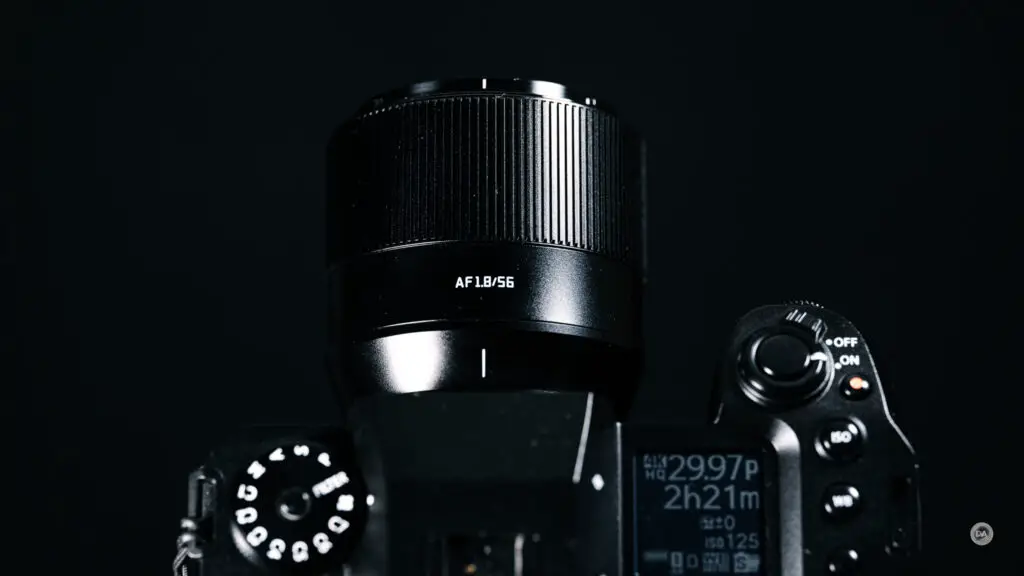
In my opinion, this is actually quite a handsome little lens. It has an anodized black finish that is very clean and timeless along with a subtle sculpting on the barrel before the focus ring.

This has practical as well as well as aesthetic value as it gives the fingertips a very natural place to rest. I find it has a nice tactile quality to it.

The TTArtisan AF 56mm is slightly bigger than the AF 35mm I reviewed a few months ago, but nothing significant.
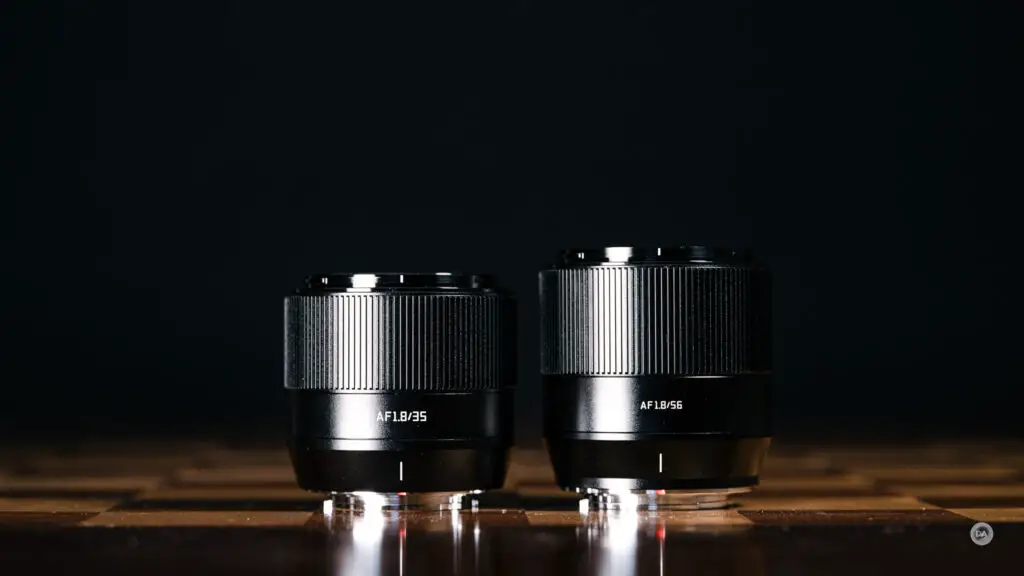
There are no switches on the lens barrel nor an aperture ring, which does set it behind some of the alternatives (both the Viltrox and the Fuji lenses have aperture rings). This makes for a very clean looking design, but I would obviously prefer having an aperture ring and an AF/MF switch. This might be the place where they saved some money in development costs, which makes for a less expensive price tag. That at least will be appreciated by some.
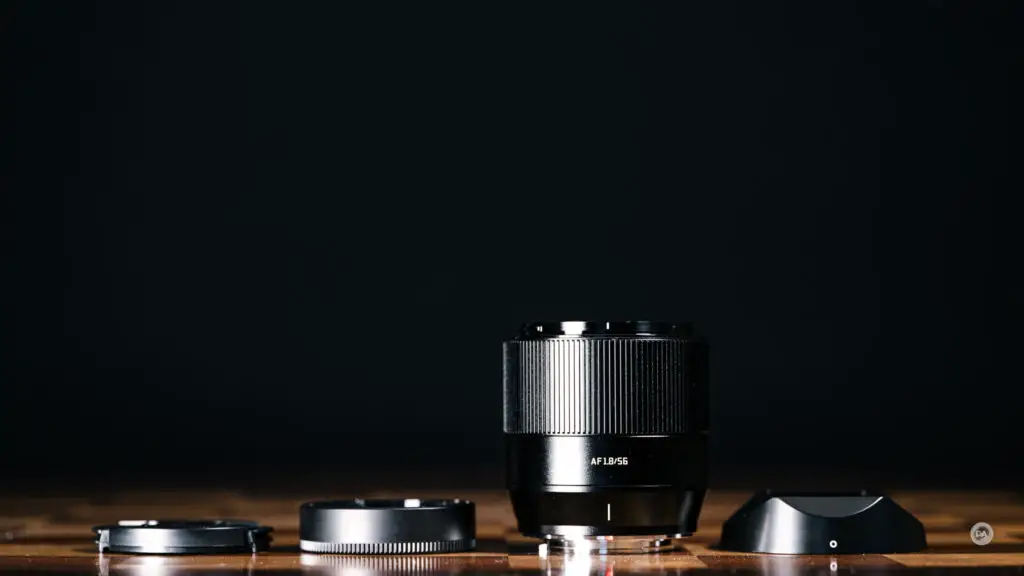
At the rear of the lens we have a metal lens mount complete with the appropriate electronic contacts; aperture will be controlled from the camera. Aperture control seems to work well; it is quick and responsive and the aperture iris blades are not noisy
There are nine aperture blades that do a reasonable job of maintaining a circular aperture. Here’s look stopped down over 3 stops at F5.6:
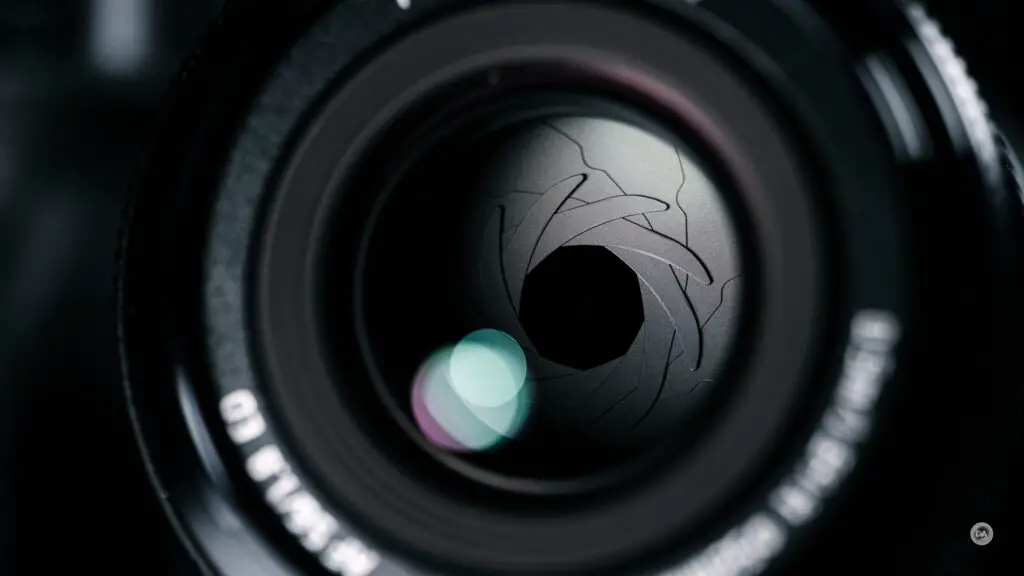
The included lens cap has a new font for the TTARTISAN logo imprinted on it, and I think it looks smart and modern.
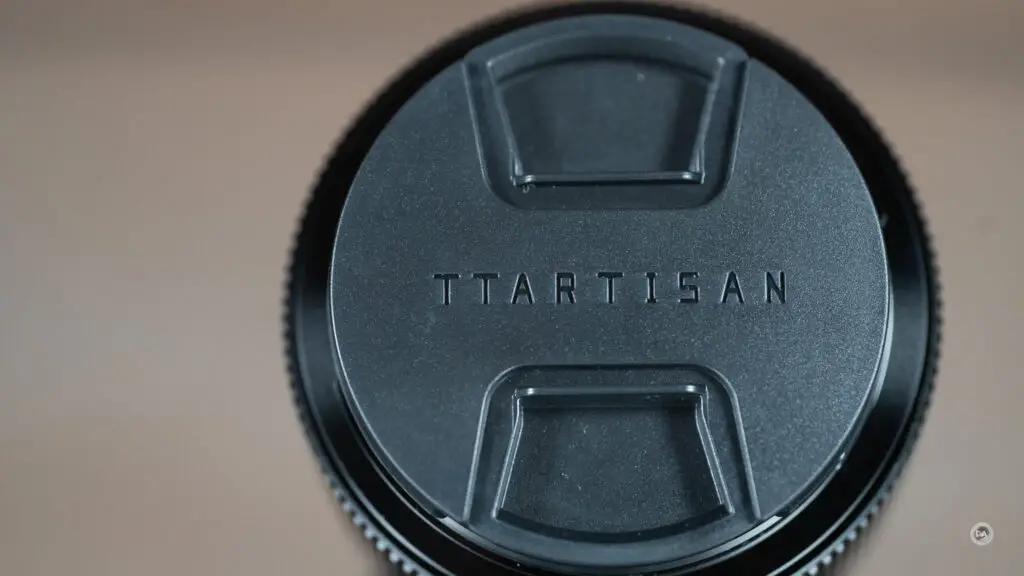
Decidedly less modern (and much more odd) is the design for the lens hood. It has a very strange design that closes down into a rectangular opening up front…just like the 35mm. That’s obviously an area where they didn’t listen to my feedback!

On a positive note, the hood is made of a matching metal and is a nice aesthetic match at least as far as the finish and materials go. But there’s a huge downside to this design. When mounted you can use neither filters nor the lens cap, so it’s either the hood or filters/lens cap. If the flare resistance was better, I’d say skip the lens hood…but that’s still an area of weakness.
The manual focus ring is another positive, however. It is ribbed in metal and moves with a nice amount of resistance. The active focus area will automatically magnify when you start to focus, and this helps visually confirm accurate focus. Focus throw feels like it is somewhere near 160° of rotation.
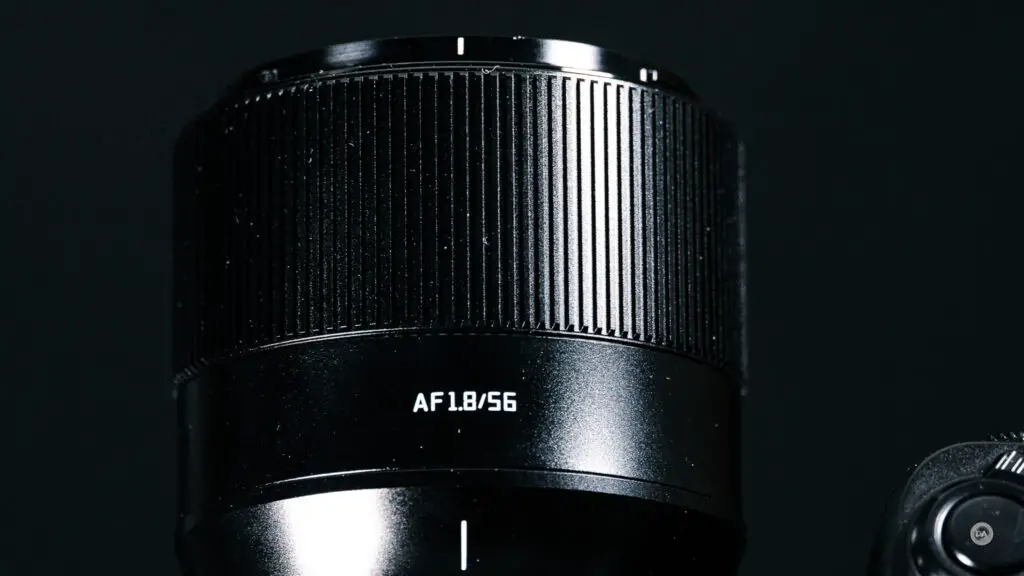
One final interesting design element is that the rear lens cap has a USB-C port along with electronic contacts inside and will actually allow you to do firmware updates to the lens through a computer. It’s an interesting alternative to having a USB-C port built right into the lens, though I do slightly prefer the built-in option in case you lose the rear lens cap at some point.
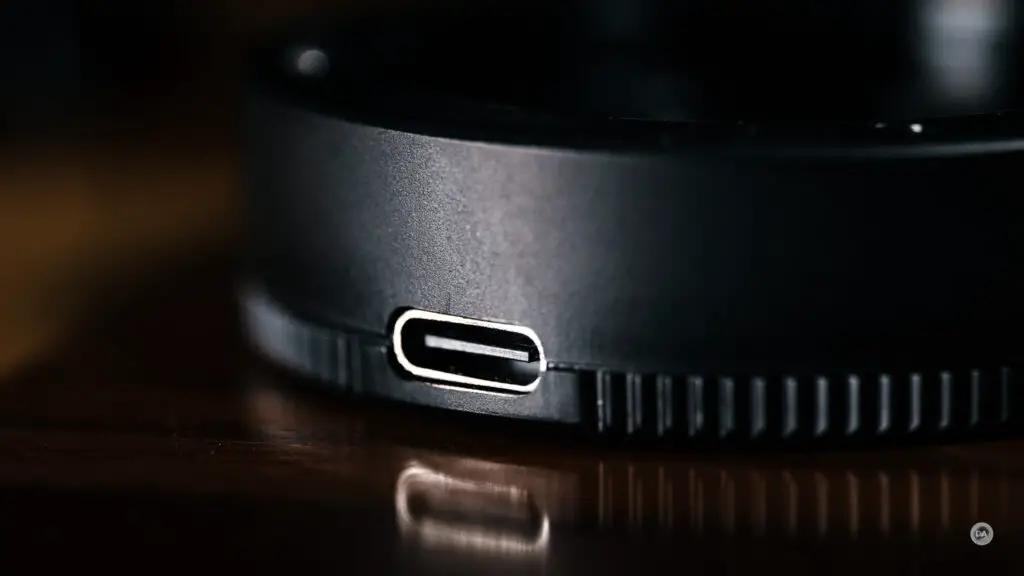
TTArtisan definitely made an improvement to the minimum focus distance. The AF 35mm could only focus as closely as 60cm, which is very long for that kind of focal length. The AF 56mm can focus closer (50cm) despite having a longer focal length, which adds up to a much improved magnification of 0.14x, which equals both the Fuji and Sigma 56mm lenses.
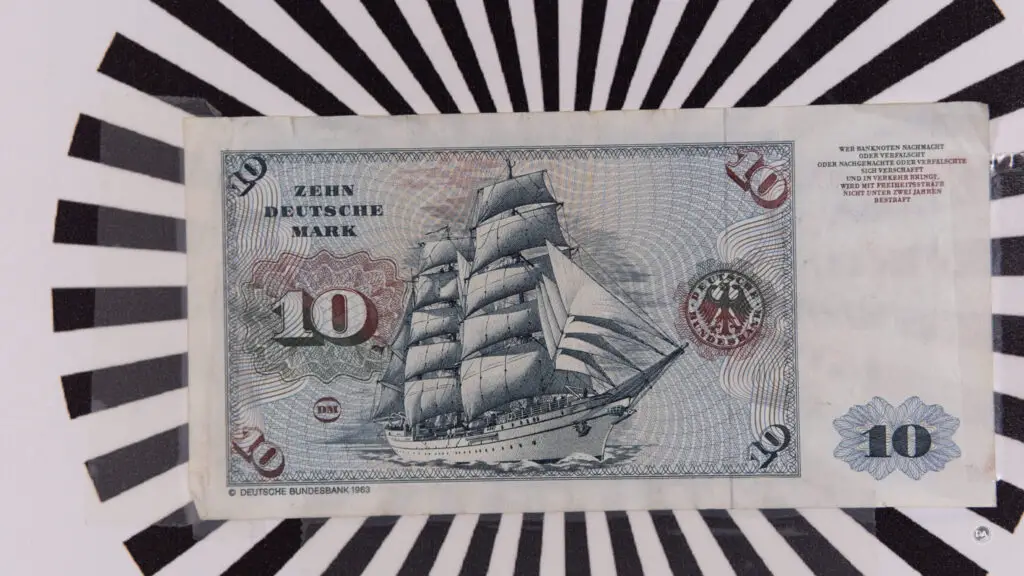
That’s not exactly macro, but it is close enough to allow you to get fairly close to a subject and strongly blur out the background.
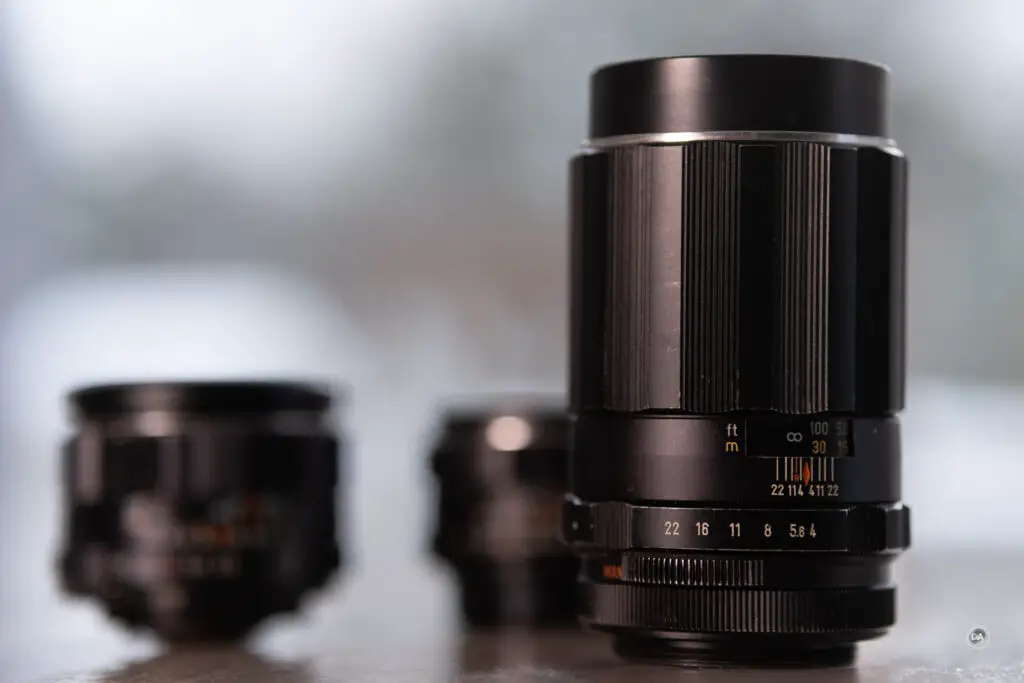
In some ways this will help it compete a little better with the larger aperture of, say, the Viltrox AF 56mm F1.4, as being able to focus closer will allow you to blur out the background better than that F1.4 lens.
This is a big step forward for TTArtisan in their lens design, and I’m glad to see them solve the minimum focus issue sooner rather than later.
The TTArtisan AF 56mm F1.8 feels great in the hand (it feels quality, despite the budget price!) and handles nicely. I don’t love the hood design, but the fact that a lens this inexpensive comes with the hood is impressive anyway. Other than that, there is little to complain about on the build front.
Autofocus and Video
TTArtisan has equipped the AF 56mm F1.8 with an STM (stepping motor). Fuji is not my favorite platform for autofocus, but I will assess this lens relative to the Fuji competition. Autofocus noise is relatively low. There is a faint whirring sound during autofocus changes, but I could mostly only hear it in a very quiet environment.
Autofocus accuracy was fairly good, even when Nala’s little head was popping up out of the box she was playing in.

I was able to nab focus on narrow objects out in the field, and you can see that crisp delineation that we all love from quality lenses.

Here’s another example of pinpoint focus.

I tested focus speed both indoors and outdoors, and my impressions are that focus speed is averagely fast. It’s not instantaneous like the lenses equipped with the best linear motors, but neither is it slow. There is a split second pause while inertia builds and focus takes place, but the focus transition is then pretty snappy. There is no visible stepping apparent. Focus speed was a little faster outdoors in excellent light than what it was in my indoors test.
I found focus speed and accuracy fine for an event setting (in this case, a church), and it grabbed the eye quickly and delivered accurately focus results.

The lens worked fine for portrait work even in the very inexperienced hands of my youngest son. I had him take some photos of me, and it might have been the first time ever having a Fuji camera in his hands. The results were still focused fine, however, and the results from a quick setup looked fine in terms of color and overall “look”.

(Bonus points for spotting Nala’s tail!)
I used the lens for a portrait session and had zero issues with focus and got very nice looking results.



Video AF is interesting with the TTArtisan AF 56mm F1.8. Focus pulls are reasonably smooth, though with a few obvious steps towards the end of the focus pull. There is some focus breathing, but it isn’t terribly obvious.
My biggest challenge is that touching the screen on my X-H2 wasn’t always reactive, requiring multiple touches sometimes to trigger focus change. Now, to be fair, Fuji’s touchscreens are not particularly reactive, but this was more than just that more typical issue.
My hand test (where I alternately block and then unblock the camera’s view of my face with my hand) was better. Fuji’s AF is more reactive when a recognizable, trackable subject is on screen, and in this case I wasn’t having to use the touchscreen. It handled the focus transitions from my hand to my face and vice versa fairly well, and was more reactive overall than what the 35mm was in that same test.

The bottom line on autofocus is that it really is pretty good for A) such an inexpensive lens and B) being from a company that is just learning how to build autofocus motors. My experience with many of these companies is that they are fast learners; between firmware updates and new designs in the future, expect TTArtisan to get a lot better at autofocus very quickly. There is already some improvement from from what I saw on the 35mm. Video AF wasn’t great, but, to be fair, I rarely find video AF results great from any third party lens on Fuji (and rarely from first party lenses, either).
Image Quality Breakdown
TTArtisan has given us an optical design of ten elements in nine groups, which includes 2 HRI (High Refractive Index) elements and 1 ED (Extra Low Dispersion) elements. The MTF chart looks fairly unimpressive, though the real world performance strikes me as being much better than this.
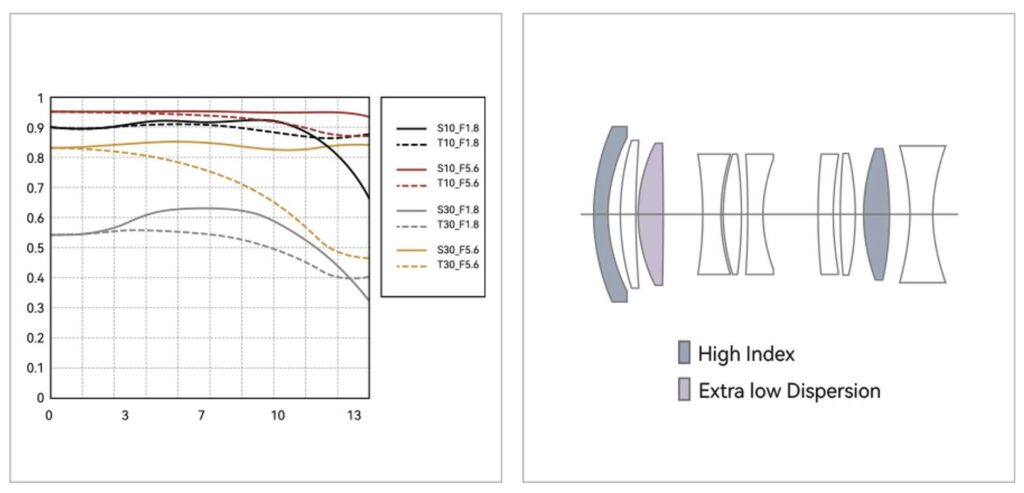
The MTF suggest the mid-frame will be sharper than the center and then dips off towards the edges. The stopped down performance (gold lines) suggests a significant improvement across the frame.
As noted in the intro, testing this on a Fuji 40MP APS-C sensor is an extreme torture test, so we’ll see how it handles resolution higher than the 30 lp/mm projected here. Ironically, this lens seems to do just fine on the higher resolution sensor in real world shots, surprising me on how good photos looked at a pixel level.


For a budget lens the TTArtisan AF 56mm F1.8 can produce some very strong looking images.

We’ll dig into the details by taking a look at vignette and distortion. There is no observable distortion (bravo!) and a moderate amount of vignette (+68).
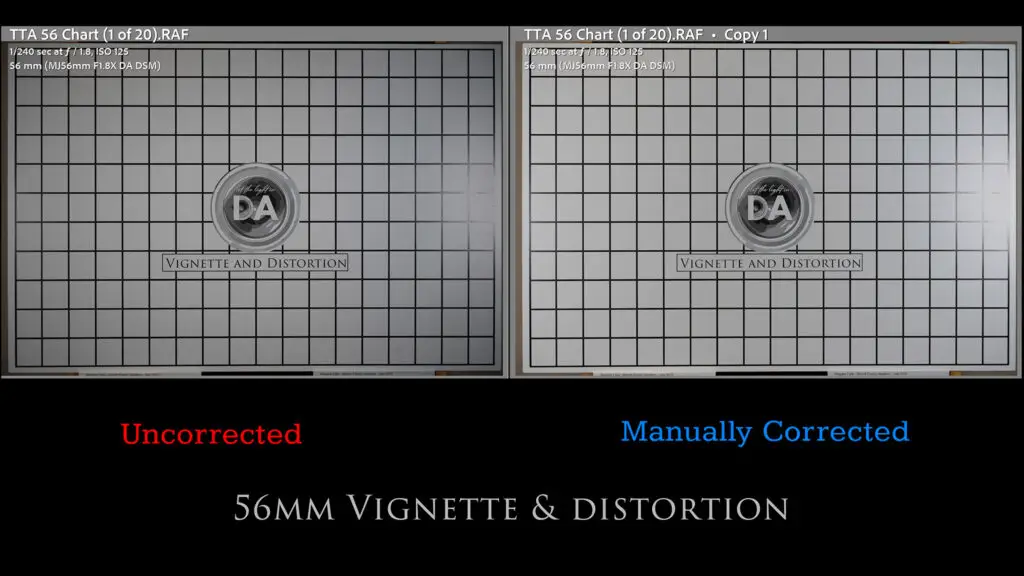
This is a really nice performance for a budget lens. Interestingly, there seems to be a correction profile available in Lightroom already that does seem to work pretty well, though the lens is identified in Lightroom as MJ 56mm F1.8X DA DSM. That’s almost certainly not correct, but at least it identifies it as a 56mm F1.8 lens…and the profile seems to do a perfect job of correcting the vignette.
Longitudinal chromatic aberrations were an issue with the 35mm F1.8, but this was an area where TTArtisan set out to improve things, and they definitely have. You can see a nice control of fringing before and after the plan of focus here.

I also see next to no fringing in the bokeh highlights in this shot.

Lateral chromatic aberrations show up near the edge of the frame in transitions from dark to light areas. You can see from the edge of my test chart that there are minute amounts of fringing, but not enough to be a factor at all.

So how about resolution? The 40MP Fuji X-Trans sensor tends to make all but the very sharpest of lenses look a little soft when viewed at high magnification levels, and it just so happens that my review standard is to examine results at a 200% magnification. That is a lot to ask of any lens, much less one this inexpensive…but maybe the TTArtisan AF 56mm will surprise us. Here’s a look at the test chart that crops throughout the review come from:

And here is a look at F1.8 crops from the center, then mid-frame, and then extreme lower right corner:
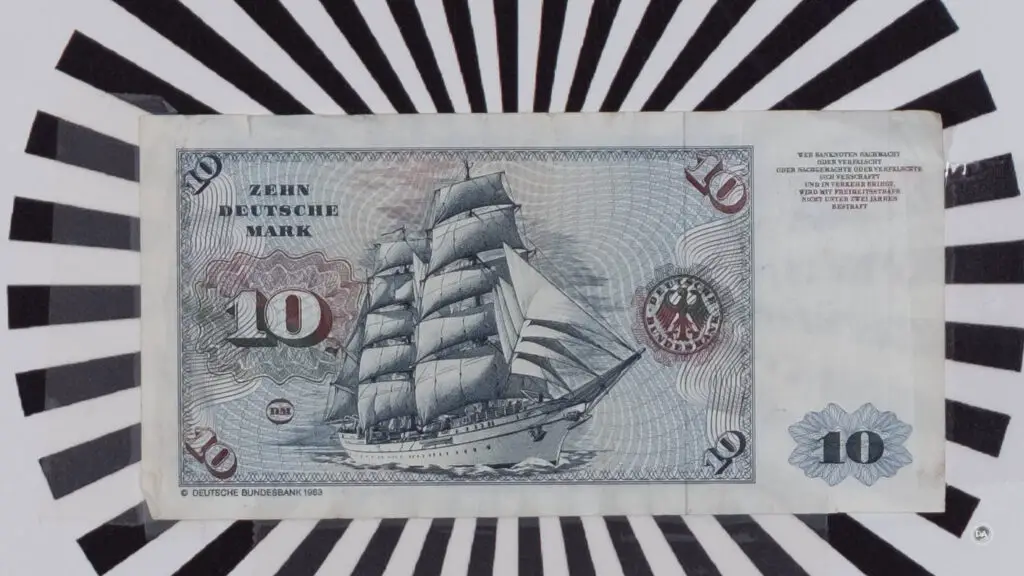


As I’ve said, this lens has surprised me in its ability to keep up in this challenging environment. Nothing looks too bad here. The center and mid-frame look quite good (mid-frame is the strength for this lens according to the MTF charts), but while the corner has less contrast and detail, it doesn’t look bad.
In fact, if I shoot a real world shot focused near the corner and crop at a high magnification level, we can see that while contrast isn’t off the charts, there is plenty of detail there and no “bleeding” of the textures on the barrel of the lens.
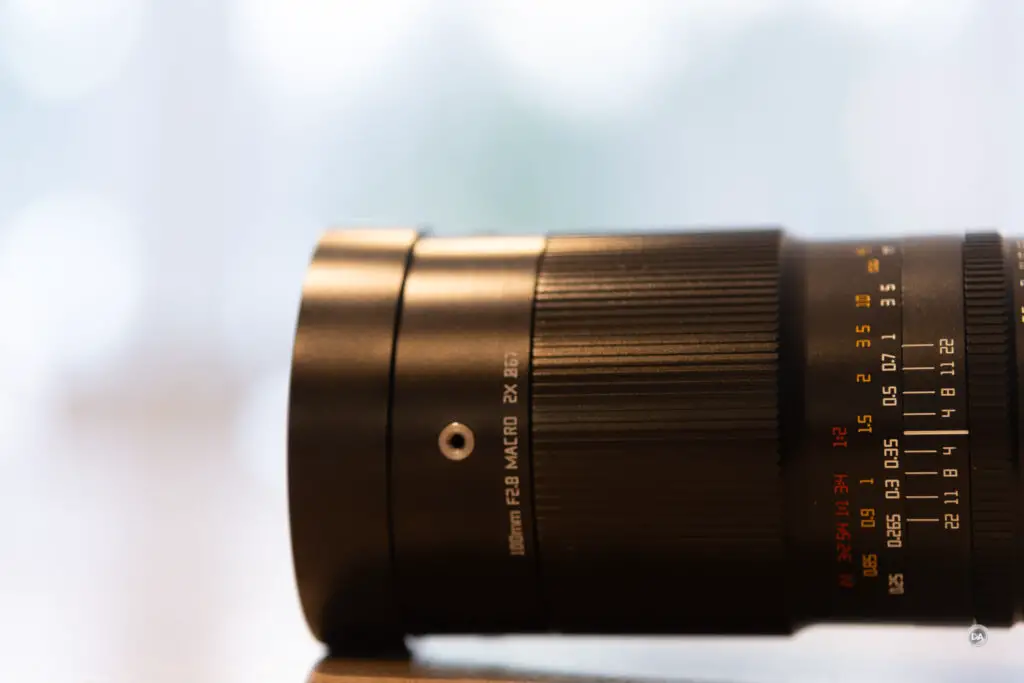

Real world results were mostly impressive to me. I “shot from the hip” to get a quick photo of a unique looking dog passing by me while out hiking (and didn’t want to make a big deal with the owner), and you can see that not only is the result (at F1.8) well focused, but there is also a really nice amount of detail in the various textures of the fur.


Unfortunately, while I have reviewed all of the other autofocusing 56mm options, I haven’t tested any of them at the 40MP level. My experience with this sensor has been that there really isn’t any comparison with the lower resolution results; I’ve reviewed the same lens at 26MP and then at 40MP on Fuji and the results are radically different. But by looking at my results at lower resolutions and extrapolating, I think that at similar apertures only the Sigma 56mm F1.4 would match or exceed this result. That’s pretty impressive considering how low the price tag is on the TTArtisan lens.
Stopping down the minor jump to F2 (one-third stop) doesn’t make a radical difference in resolution or contrast. Not that I would expect that, but I’ve been surprised at times by the improvement in that very mild closing of the aperture. There’s a very minor improvement in contrast, but nothing significant. I also didn’t see much of a difference at F2.8.
By F4 the center and mid-frame are looking pretty great, with a slight but noticeable improvement from F2.8:

By F5.6 everything looks good save the extreme corners, which don’t ever get pin sharp. They seem to peak around F8, where the corners look good but not fantastic. They do look noticeably better than at F5.6, however.

You can see this in real world images as well. In this shot looking down on rushing waters around ice you can see the softening to the corners. If you look at the crop (second image), the upper left shows nice delineation of the ice edge over the water, but that gets progressively softer as you get towards the corners.

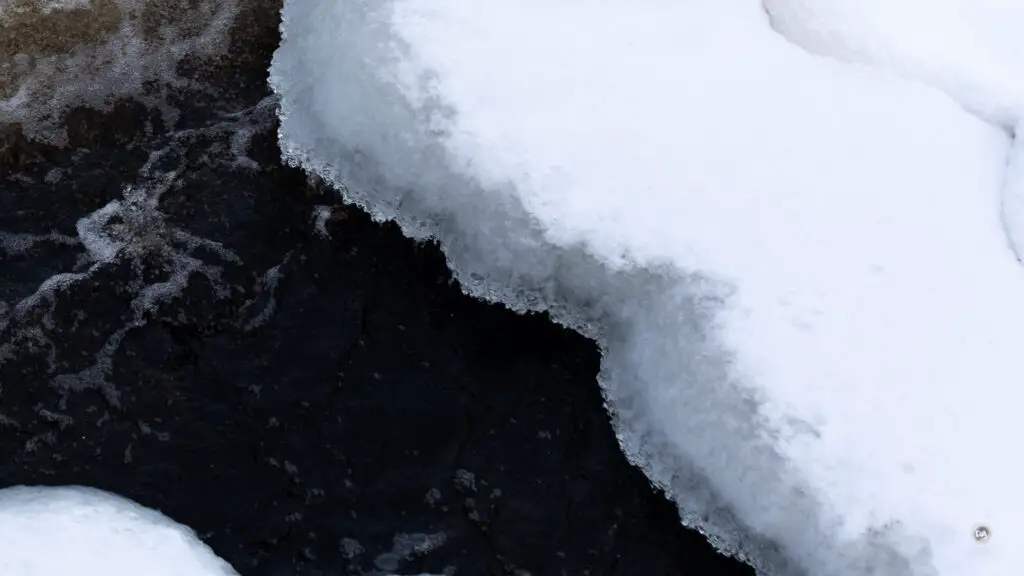
My results are typically pretty consistent with what the MTF charts suggest, but in this case I felt like the lens performed better wide open than the MTF chart suggested, but didn’t show as drastic an improvement when stopped down. Since this focal length is typically prized for portraiture, it could argued that the corner performance is far less important than having sharp results at wide apertures in the rule of thirds zone.
That aside, I did feel like landscape results didn’t look bad at all.

Diffraction comes early on a high resolution body like this, so expect some softening by F11 and much more obvious softening by F16, which is minimum aperture here.
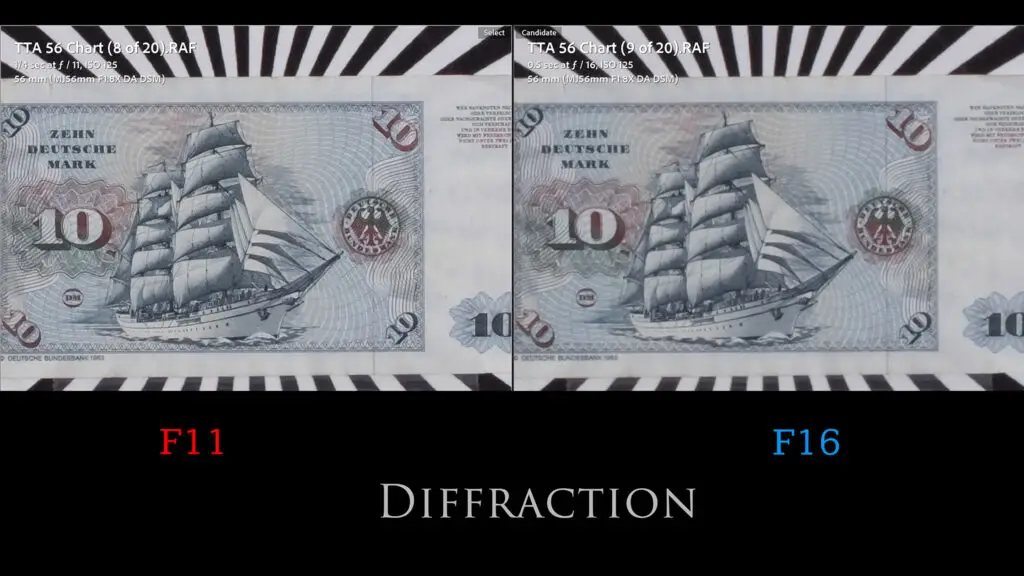
The bokeh quality from this lens is good but not exceptionally so. Geometry isn’t bad, as while you will see some deformation of specular highlights near the edges of the frame, it isn’t severe. The bokeh remains fairly circular looking through F4:



Non-specular backgrounds look fairly soft, but not incredibly creamy like the most “magical” lenses are able to create:

I would chalk that up to a bit more outlining in the defocused area than is optimal. You can see that while the background is fairly soft in this shot, you can still see some of the edges of defocused objects.

But, to be fair, this is a $150 lens, so I don’t expect it to be absolutely incredible in this area.
TTArtisan focused on improving the coatings on this lens, and while it is better than the 35mm, this is still an area where there is room for growth. It’s true there is less of the ugly ghosting artifacts here, but you will certainly see different veiling and blooming effects if bright lights are in (or just out of) the frame.
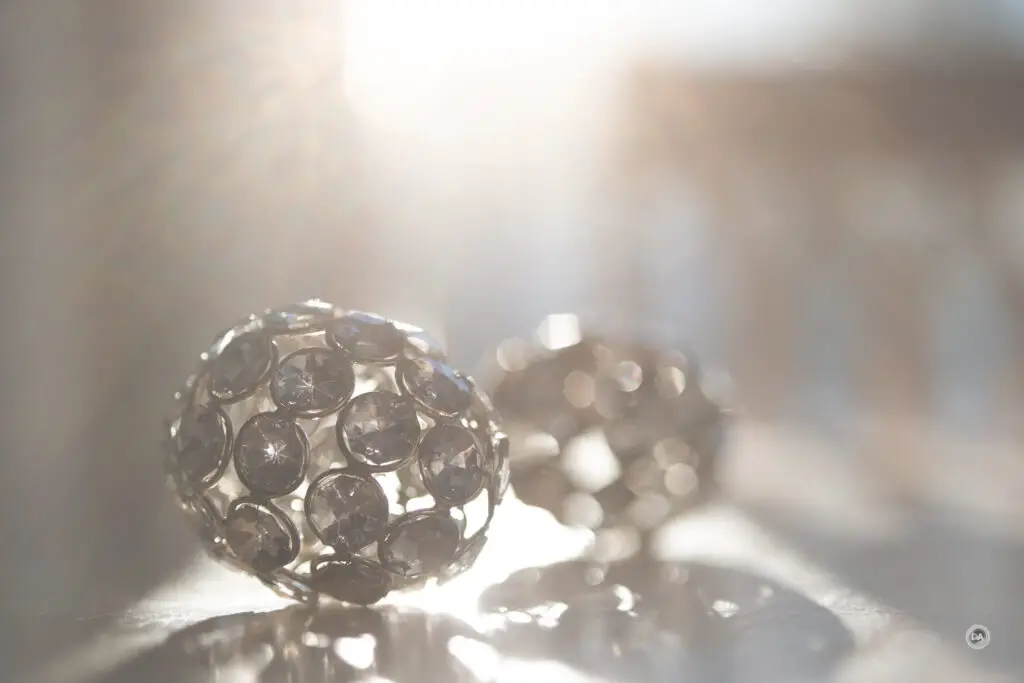
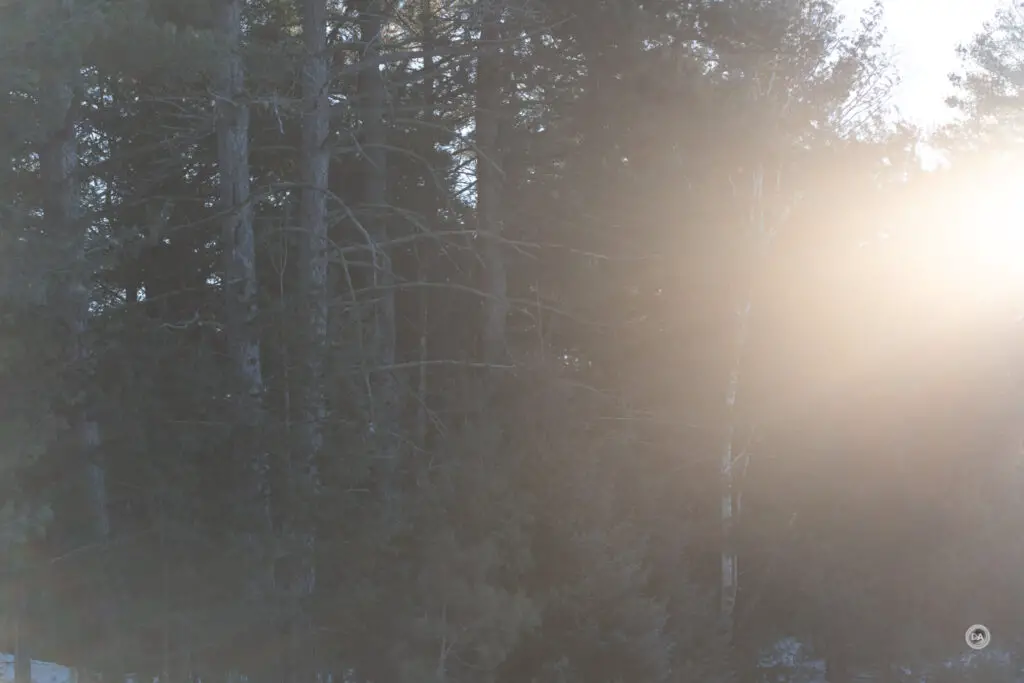
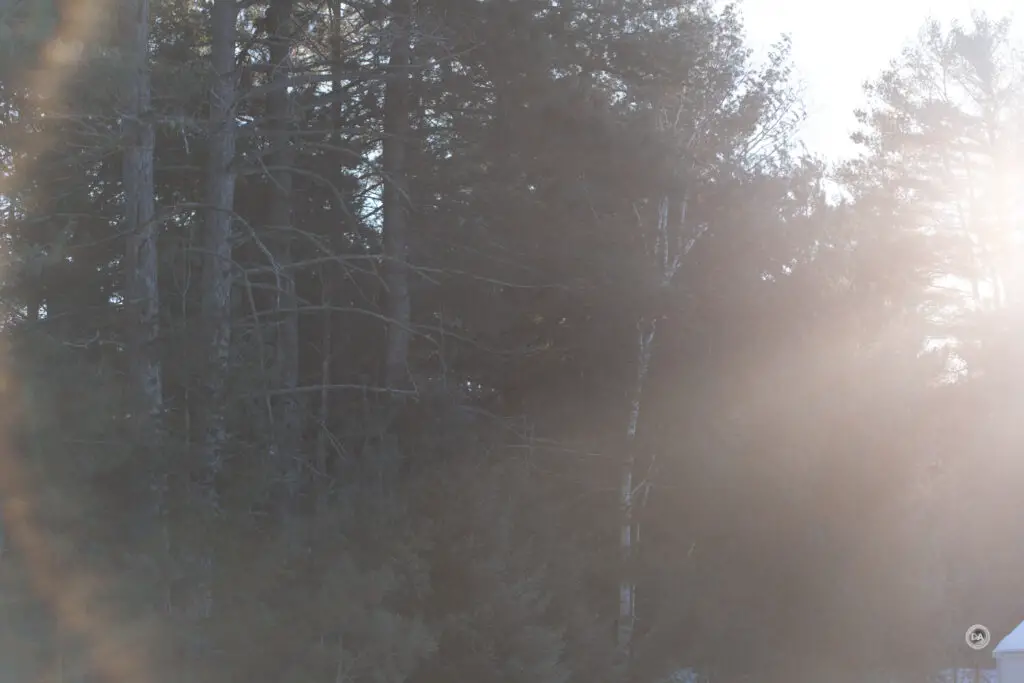
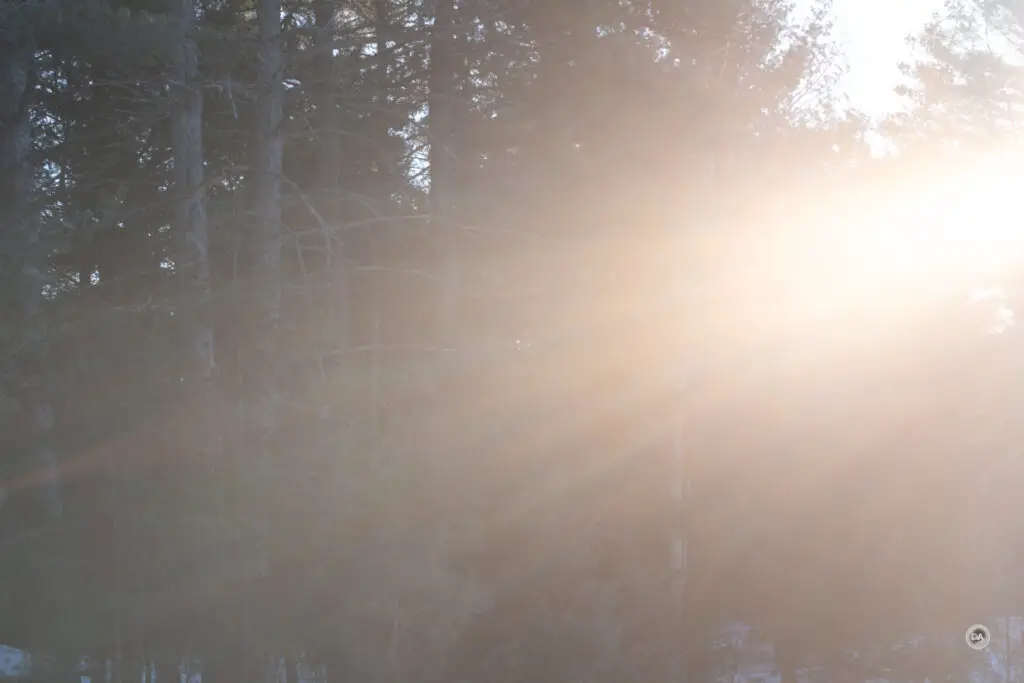
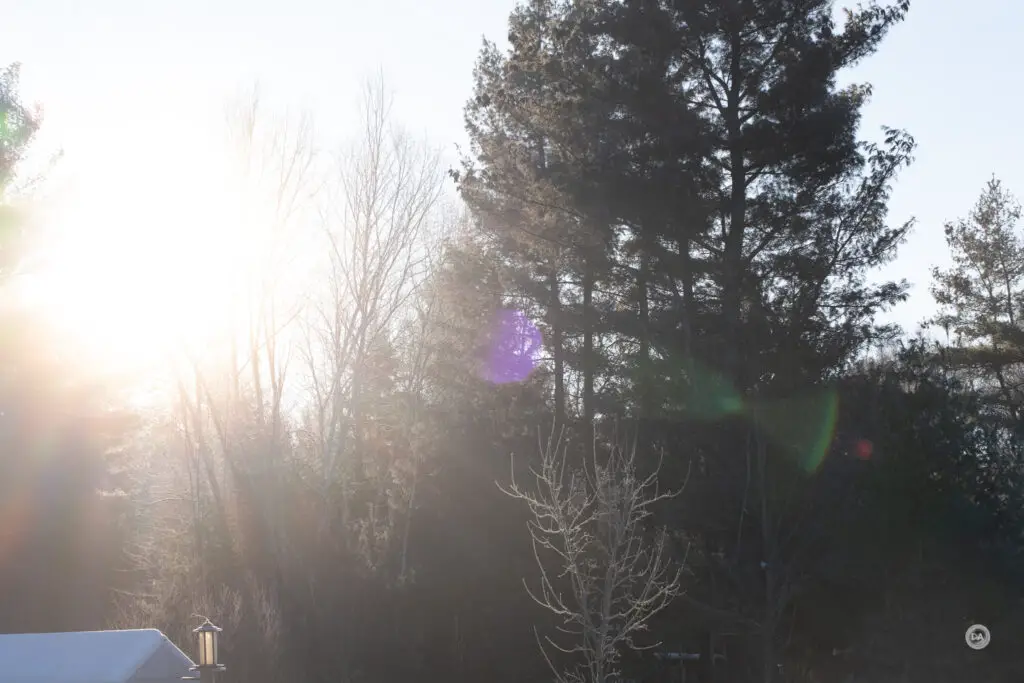

On a positive note, I did feel like a lot of these effects were fairly artistic (seems like I’ve created most of these “looks” in software to add visual interest to edited images in the past!), so I think they can be used to creative effect if used well. But if flare resistance is the goal, there’s still a lot of room for improvement here.
I feel pretty positive overall here. Aberrations are well controlled, sharpness is better than expected, and there’s no critical flaws. I feel like this lens is offering very good “bang for the buck” optically. Even colors seemed fairly accurate (this hasn’t been the case with all TTArtisan lenses in the past).

You can check out the image gallery to see more photos and see if the rendering from the lens suits you.
Conclusion
TTArtisan is learning quickly. There’s already some obvious signs of maturation in the TTArtisan AF 56mm F1.8 from the AF 35mm F1.8 that I reviewed just two months ago. Better minimum focus, fewer aberrations, and better flare resistance (though still a bit of room for growth there). On paper (MTF), the 35mm should be a bit sharper than the 56mm, but the better control of aberrations on the 56mm resulted in better real world results for me. Some of the spherical aberrations of the 35mm reduced contrast, but there’s less of that here and thus better real world results.
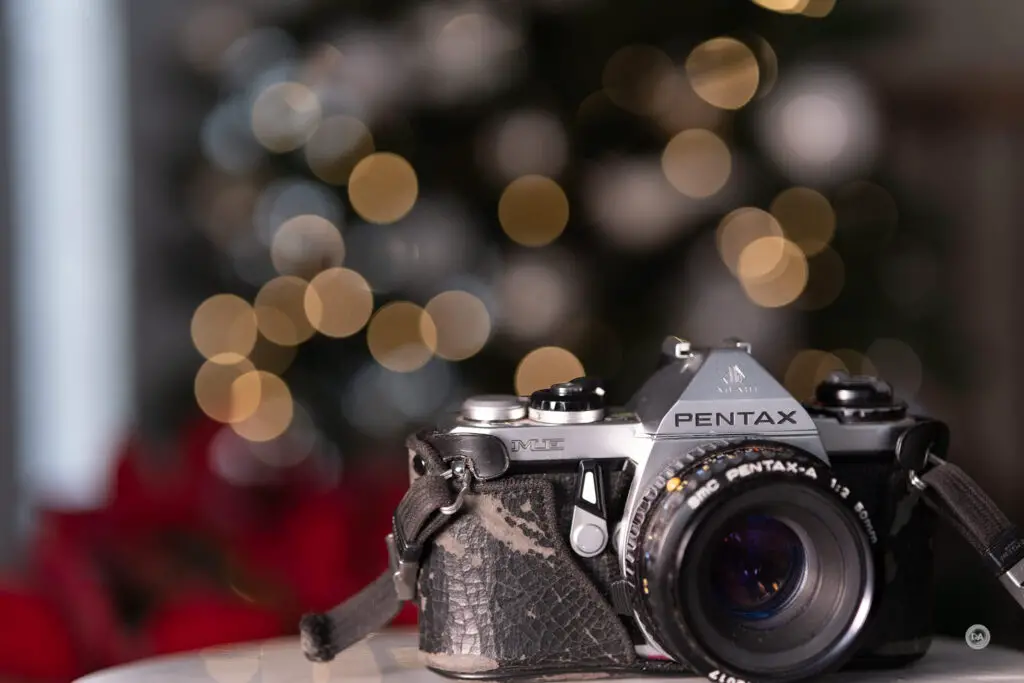
This has been the least expensive lens that I’ve tested that I feel does a reasonable job of handling the extremely demanding sensor on my X-H2. If you’ve recently purchased an expensive X-H2 or X-T5 and your wallet is broken, this is a very affordable lens that does a very credible job on this platform.
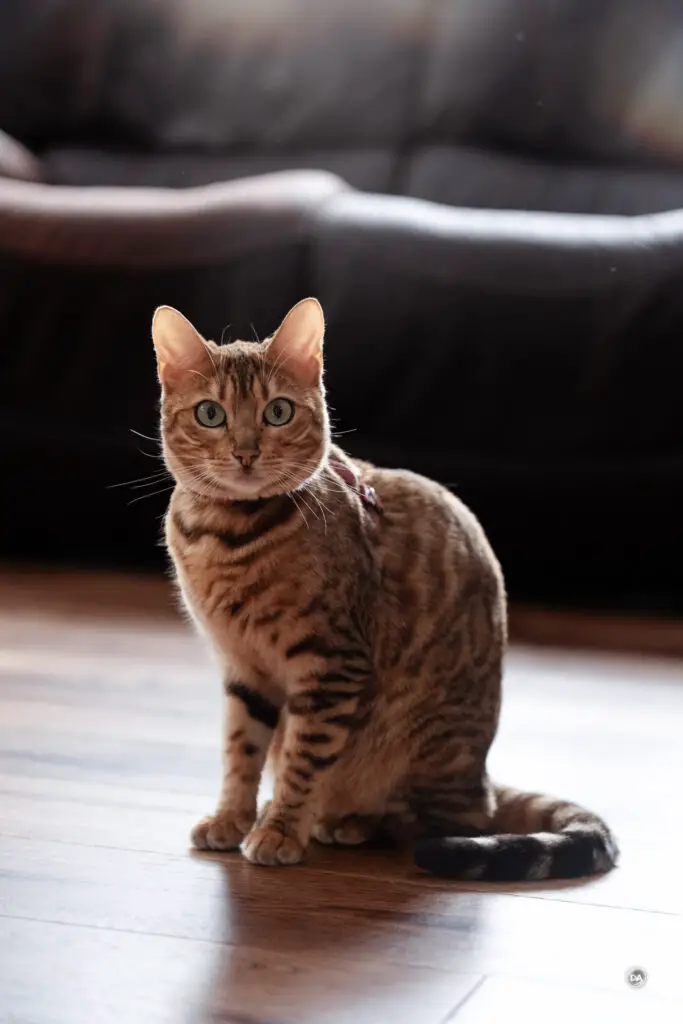
Sharpness should look even better on lower resolution cameras from Fuji, Sony, or Nikon. That makes the TTArtisan AF 56mm F1.8 an interesting proposition, as while there are alternatives with faster maximum apertures, they are considerably more expensive but not necessarily much better optically. The top competitor will be the also new Viltrox AF 56mm F1.7, which is also very good. There’s some give and take between these two lenses, and you can see my review of the Viltrox here. Autofocus isn’t top tier, but for everything outside of extreme action photography it works fine. This is a lot of lens for under $160 USD, and so if you are looking for a budget telephoto, this definitely checks plenty of the boxes.

Pros:
- Nicely built lens
- Nice looking lens
- Compact size and light weight
- Good manual focus ring
- Ability to upgrade firmware through rear cap
- Focus accuracy good
- Focus motor reasonably quiet
- No distortion
- Low chromatic aberrations
- Competitive minimum focus distance
- Nice bokeh
- Better flare resistance
Cons:
- Lens hood design is odd
- Video focus can sometimes be balky
- Corners aren’t particularly sharp
- Still a few flare issues.
_________________________________________________________________________
GEAR USED:
Purchase the TTArtisan AF 56mm F1.8 @ B&H Photo | Adorama | Amazon | Amazon Canada | Amazon UK | Amazon Germany
Purchase the TTArtisan AF 35mm F1.8 @ B&H Photo | Adorama | Amazon | Amazon Canada | Amazon UK | Amazon Germany
_____________________________________________________________
Purchase the Fujifilm X-H2 @ B&H Photo | Adorama | Amazon | Camera Canada | Amazon Canada | Amazon UK | Amazon Germany
_______________________________________________________________
Purchase the Fujifilm X-T5 @ B&H Photo | Amazon | Camera Canada | Amazon Canada | Amazon UK | Find it Used at KEH
________________________________________________________________
Purchase the Fujifilm X-S20 @ B&H Photo | Adorama | Amazon | Camera Canada | Amazon Canada | Amazon UK | Amazon Germany |
_________________________________________________________________
Want to support this channel? Use these affiliate links to shop at: B&H Photo | Amazon | Adorama | Camera Canada | Amazon Canada | Amazon UK | Ebay | Make a donation via Paypal
Buy DA Merchandise https://bit.ly/TWIMerch
Keywords: TTArtisan, AF, Autofocus, 56mm, F1.8, TTArtisan AF 56mm F1.8, Fuji X, Fujifilm, X-mount, APS-C, Review, Telephoto, Action, Tracking, Hands On, Dustin Abbott, Real World, Comparison, Sharpness, Bokeh, Flare Resistance, Autofocus, Image Quality, Sample Images, Video, Photography, Fujifilm X-T5, Fujifilm X-H2, let the light in, #letthelightin, DA
DISCLAIMER: This article and description contains affiliate links, which means that if you click on one of the product links, I’ll receive a small commission. As an Amazon Associate I earn from qualifying purchases.










 Viltrox Pro AF 85mm F1.4 FE Gallery
Viltrox Pro AF 85mm F1.4 FE Gallery  Viltrox AF 85mm F1.4 PRO FE Review
Viltrox AF 85mm F1.4 PRO FE Review  Yongnuo YN 35mm F1.8 ART Gallery
Yongnuo YN 35mm F1.8 ART Gallery  Yongnuo YN 35mm F1.8 DA ART Review
Yongnuo YN 35mm F1.8 DA ART Review 


